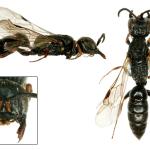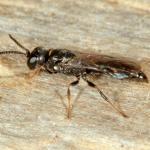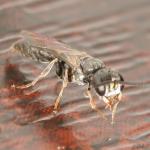Widely distributed through England and Wales.
Similarly in Europe and Asia, east to Japan (Lomholdt 1975-76).
This species is not regarded as being scarce or threatened.
Rather a generalist: habitat includes suburban gardens, where there are wooden posts or old timber containing nests of other Passaloecus species. Also found in reed beds.
Late May to late September; particularly June to July.
The prey collected are aphids (such as Aphis and Anuraphis), sometimes stolen from the nests of other species of Passaloecus (Corbet & Backhouse 1975; Yeo & Corbet 1995) and from Psenulus pallipes according to Chevalier, cited by Richards (1980). The females may even rob from conspecific nests (Lomholdt 1975-76).
Similar in nesting biology to P. eremita (Lomholdt 1975-76). Nests have been found in wooden posts, old timber and occasionally in Lipara lucens (Diptera: Chloropidae) galls on common reed. Both sexes and an occupied nest are illustrated by Blösch (2000).
No information available.
Hymenopterous parasitoids have been recorded in continental Europe: Eurytorna nodularis (Chalcidoidea) and Trichrysis cyanea (Chrysididae) (Lomholdt 1975-76).
2002




